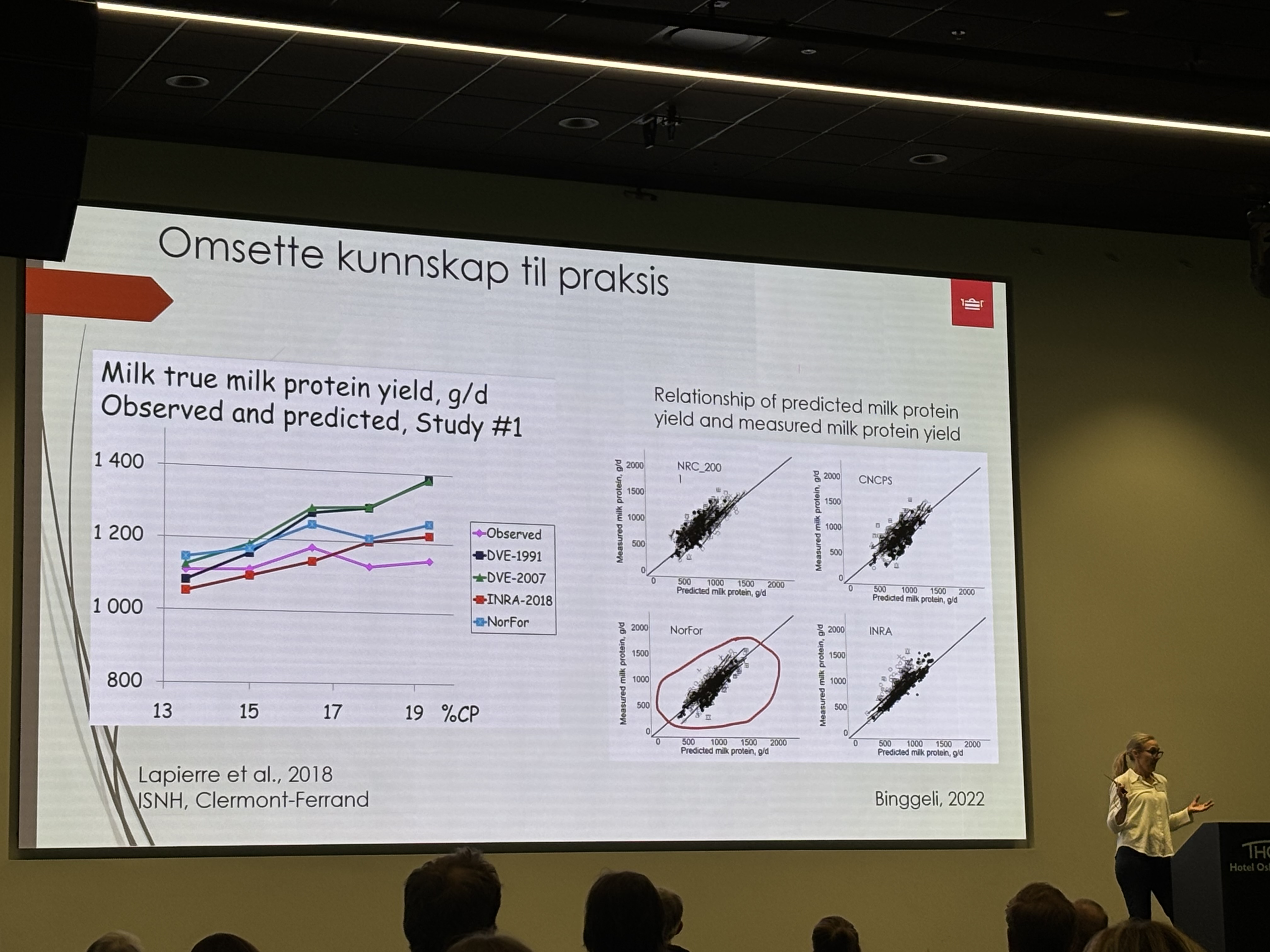How little protein can a cow manage without compromising health and production?
At the Grovfôrkongress in Norway, Ingunn Schei presented NorFor's work on protein feeding in dairy cows. The talk was titeld: "Respons av AAT i melkeproduksjonen er utfordrende å dokumentere" (Response of AAT (amino acids absorbed in the intestine) in milk production is challenging to document).
At NorFor a group of six researchers from the Nordic countries are working together exploring whether there is a need for making changes to the requirements standards in the feed evaluation system used in feed advice service. The reason? To reduce nutrient losses and greenhouse gas emissions while still supporting cow health and farm profitability with balanced feed rations. It all boils down to: How little protein can a cow manage without compromising health and production?
The researchers at NorFor have conducted a meta-analysis using data from published studies where cows were fed varying levels of protein from common feedstuffs like soybean and rapeseed meal. Information about, for example, the content of raw materials and nutrients in the feed, animal information such as body weights, and the milk production response was recorded. This information have then been run through NorFor's system to calculate feed values such as the amount of AAT.
Preliminary findings suggest there’s only a small and inconsistent production response when AAT supply exceeds the cows’ needs, resulting in low efficiency and uncertain economic benefits when AAT is used as energy or glucogenic substrate.
